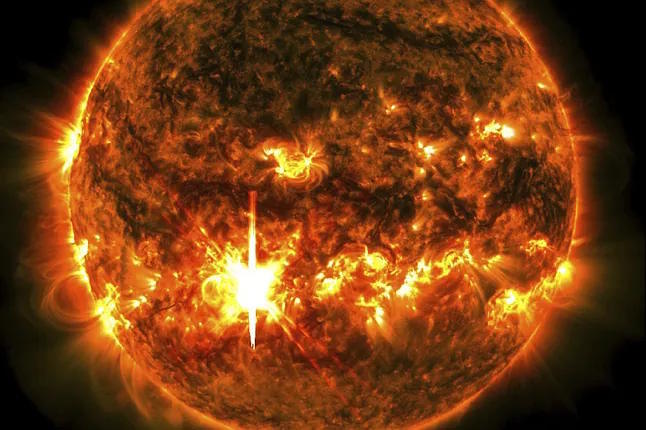Earth depends, in many ways, on the so-called space weather. And one of the factors that most influences that weather is the Sun. Our star constantly emits radiation towards the planet, radiation that is largely blocked by the ozone layer in the stratosphere. But on some occasions, this radiation increases significantly due to solar eruptions that occur on the star and release flares. These flares or solar storms can cause blackouts, radio failures, and auroras.
The Sun has an 11-year cyclic activity. This means that there are years when solar phenomena intensify and others when they decrease. Currently, we are in the peak moment of that cycle, due to the inversion of the star's magnetic poles. Additionally, the most active region in terms of eruptions is rotating towards Earth, which also affects space weather and increases solar eruptions that impact our planet.
All these changes are already causing effects on our planet. Recently, NASA has detected the largest solar eruption of 2025, which has caused a solar flare, named X2.7 (the highest possible category), resulting in radio blackouts in some parts of the Middle East. NASA has even warned that in that area, "radio communications, power grids, navigation signals, and pose risks to spacecraft and astronauts" may still be affected.
Another effect that these solar eruptions can produce are the auroras borealis. This beautiful phenomenon that colors the skies of the poles green and purple occurs because solar flares are accompanied by coronal mass ejections (CME), which when they collide and pass through the Earth's atmosphere generate that effect that attracts so many tourists.
The cyclical moment of the Sun and the effect of the most active face of our star will cause solar phenomena to intensify for a few days or weeks, which can increase issues with radios, electronic devices, and the intensity of auroras borealis.
